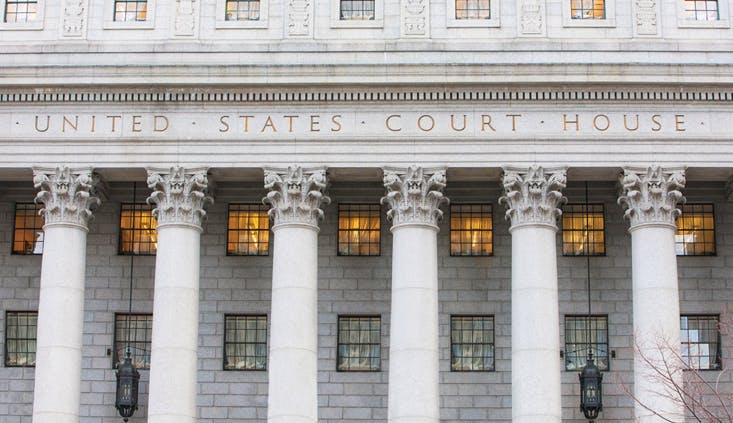The Standard for Rule 27 Relief in the Second Circuit May Change

Addresses an issue yet to be resolved in federal courts within the Second Circuit
– whether in connection with a Federal Rule of Civil Procedure 27 Petition to perpetuate testimony and evidence, a petitioner must show that the evidence sought to be preserved is in danger of literally being lost, concealed or destroyed.As shown below, there is a compelling argument that requiring a petitioner to make such an arduous showing is not a strict requirement, particularly in light of authority from federal courts around the nation.
Rule 27 of the Federal Rules of Civil Procedure (Rule 27) is a tool not utilized by enough lawyers today, likely because few lawyers are familiar with its powerful use. Rule 27 permits a potential litigant the ability to petition a federal court to obtain discovery – i.e., depositions or the production of documents – before an action is filed to perpetuate its use for an anticipated action.
Typically, federal courts within the Second Circuit analyze a three-prong test to determine whether Rule 27 relief is warranted. That test for Rule 27 petitioners is as follows: (1) to furnish an explanation of what the petitioner anticipates the testimony would demonstrate, (2) to show that the petitioner expects to bring an action cognizable in federal court, but is presently unable to bring the action or cause it to be brought and (3) to make a showing that the evidence sought to be preserved would otherwise be lost, concealed or destroyed. Petitioners have satisfied the third element by showing that the proposed deponent is literally unavailable, i.e., elderly and/or sick or stuck in a foreign country not suitable for a deposition (physically unavailable), or by showing that documents sought to be preserved are in danger being permanently destroyed or unable to be accessed.
Importantly, this third prong – showing that the evidence sought to be preserved would otherwise be lost, concealed or destroyed – is absent from the plain text of Rule 27.Moreover, there is no Second Circuit authority that unequivocally supports the lost, concealed or destroyed element.In fact, the seminal decision from the Second Circuit on Rule 27 holds that Rule 27 relief does not depend upon condition of the witness but is dependent on the delay and injustice in the petitioner not being presently able to bring the anticipated action.See Mosseller v. U.S., 158 F.2d 380, 382 (2d Cir. 1946)(holding that Rule 27relief “does not depend upon the condition of the witness, but upon the situation of the party (petitioner), and his power to bring his rights to immediate investigation”).

Notwithstanding the above, the majority of courts within the Second Circuit have employed this three-pong test as a strict requirement, and have dismissed Rule 27 petitions for the sole failure to demonstrate the third element. However, numerous courts have granted Rule 27 relief without any showing that the evidence sought to be perpetuated is in literal danger of being lost, concealed, or destroyed, instead focusing on the danger of the utility of the evidence sought to be preserved being lost. See, e.g., Sunrise Shipping, Ltd. v. M/V American Chemist, 1997 WL 639023, at *3 (E.D. La. Oct. 15, 1997) (granting Rule 27 petition because the “utility” of the evidence sought to be preserved would be lost); Pacific Tech. Corp. v. Ehrenwald, 2000 WL 1634393, at *2-3 (S.D.N.Y. Oct. 31, 2000) (holding that a “court of equity must balance the need to discourage the use of Rule 27 as a means of obtaining discovery to see if a cause of action exists and the need to preserve evidence that may be highly relevant should an action be commenced”). See also, Application of Deiulemar Compagnia Di Navigazione S.p.A. v. M/V Allegra, 198 F.3d 473, 480-481 (4th Cir. 1999) (granting Rule 27 relief because of the “rapidly changing condition” of the evidence sought to be preserved, including that it was in danger of being “materially altered”).
In that regard, the rationale employed by the courts above, that showing a danger of losing the utility of the evidence sought to be preserved is a much more sensible requirement than showing literal danger of loss. This is because if a petitioner cannot use the evidence sought to be preserved for its intended purpose – for use in an expected action – that damage is equivalent to literally losing the evidence. This is also consistent with the rationale in the Second Circuit’s seminal decision in Mosseller, which granted Rule 27 relief in part due to a petitioner being delayed in being able to bring his rights to immediate investigation.
This issue is currently being litigated by Jacobs P.C. in a hotly contested action pending in the Eastern District of New York, captioned 24 Capital LLC, et al. v. Daniel Gelbinvoich, 22-cv-3765.